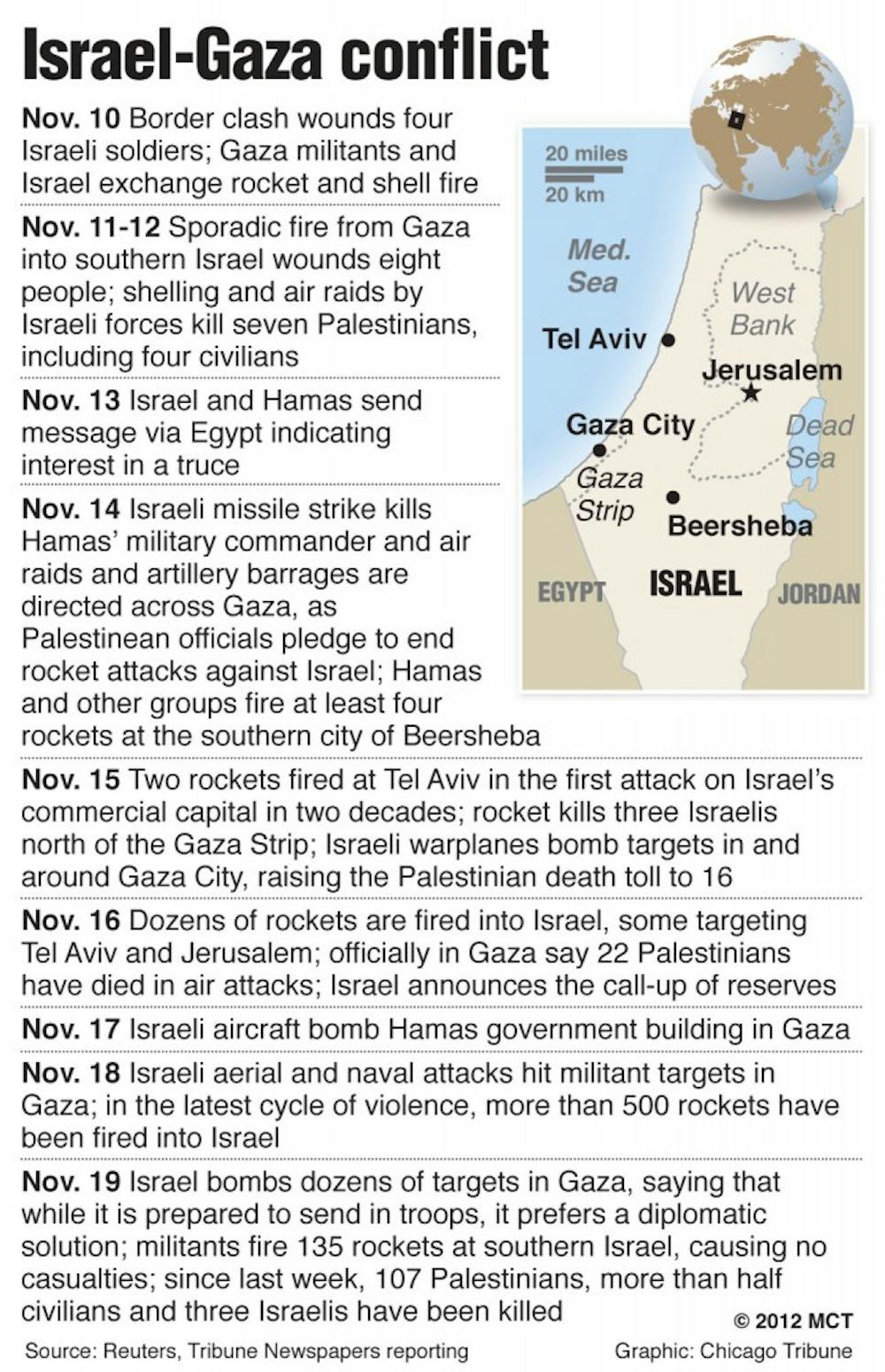More than 60 years after the start of the Israeli-Palestinian conflict, the battle rages on. Recently, a cease-fire was called after a series of attacks that lasted eight days, and Israeli and Egyptian officials began discussing the parameters of the
cease-fire on Monday. The process thus far has been murky and the outcomes even less certain.Some Americans who recently graduated from college are currently serving as Teaching Fellows in Israel, teaching English in cities across the country as part of an Israeli government initiative. Many were evacuated during the recent clashes involving thousands of rockets fired by both Israeli and Palestinian forces. An Israeli airstrike targeted the commander of Hamas, the ruling Palestinian militant group, Nov. 14, and Hamas promptly responded by sending missiles into Israel.
Alex Green, 22, a recent graduate of Oakland University in Michigan, is just one of the Teaching Fellows who was evacuated from the southern Israeli city Be’er Sheva during the conflict. He has safely returned from northern Israel, but during the evacuation, he and others he was with were eager to return to their students and feared for their safety. His group was pulled from Be’er Sheva shortly after the first rockets landed, but many Israelis stayed put and continued life with as much normalcy as possible, seeking shelter within the city.
“A number of us were in opposition to the evacuation,” Green said. “It seemed like a betrayal of our students, our teachers, our friends and their families to so quickly pull out.”
Green posted frequent updates for family and friends on Facebook and asked people to spread information about the conflict. Many people have formed opinions about the situation based on misinformation. Green said the cycle of attack and revenge can only be stopped by spreading complete and well-rounded knowledge about the history of the conflict.
Israel’s Iron Dome, a missile defense system that identifies incoming rockets that could hit civilians, shot down most of the missiles fired from Gaza that were aimed at populated areas of the country. Six Israelis were killed in the conflict, but the Palestinian toll was much higher. Without the technology to deflect incoming missiles, more than 150 Palestinians were killed.
“The biggest problem that Israel has is that Hamas is a terrorist organization that does not recognize Israel’s right to exist,” said Sarah DiStefano, 24, a Teaching Fellow from Chattanooga, Tenn. “I know that the (world’s) public opinion has always been very important to Israelis but that, in general, it seems to be formed from a lot of wrong facts. What I hope people would do is get all the correct facts about what is happening in Israel before they make any judgments.”
But Israel and Palestine have been locked in conflict for decades, and there’s no telling how long the cease-fire will hold. Although violence is not foreign to the region, fear is a familiar feeling for people living in the most dangerous areas.
“Even Israelis who have lived their whole life with rocket fire say you never really get used to it,” DiStefano said.
Still, in spite of those who genuinely want to resolve longstanding issues and stop the fighting — permanently, not temporarily, and with skeptical hesitation — many are not willing to give up ground in favor of peace. For many, the scarring and deadly effects of each attack only further justify the violent retaliation that has fueled the fight for almost 50 years.
“I believe that it is generally a traumatic event for both Israelis and Palestinians,” Green said. “Many want to see peace and an end to the status quo. Sadly, however, there are still those within each party who are eager to see the conflict escalated and see war as the solution to their problems.”


